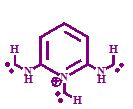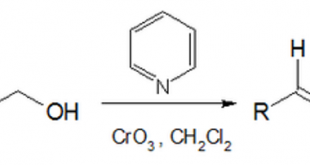Introducing a novel source of carbene on pyridine ring for the first time
۲,۶-Diaminopyridine (2,6-DAP) is formally prepared from pyridine by substitution of the 2 and 6 positions with an amino group under severe conditions. It is a medium-production-volume chemical used as a pharmaceutical intermediate and a hair dye coupler in oxidation/permanent formulations. It is soluble in water, acetone, ethanol, methanol, isopropanol and ethyl acetate. 2,6-Diaminopyridine is used as coupler in oxidation hair dye formulations, epoxy curing agent intermediate in the production of polyamides and intermediate in the manufacturing of the analgesic phenazopyridine hydrochloride. Preparation of amines has received more attention in organic chemistry. Secondary amines, due to their physiological activities, are important pharmacophores in biologically active compounds. Direct N-alkylation is, in principle, the most common and straightforward route for secondary amine formation. Treatment of primary amines with alkyl halides is known as the Hofmann alkylation. However, many methods were reported for conversion of primary amines to secondary amines by various reagents in recent years. Gaponic et al. in 1985 reported that primary amines were converted to the corresponding 1-substituted tetrazoles in the presence of sodium azid and orthoformic ester under reflux condition.
In 2014, Dr. Mehdi Nabati synthesized the secondary N-methylated derivative of 2,6-diaminopyridine with its reaction with NaN3 and HC(OC2H5)3. After synthesis of this derivative, he saw that the product is very stable under various conditions. Low reaction time, good yield and product formation without over alkylation are the advantages of this one step procedure. Also, Dr. Nabati introduced a novel carbene source. He could trap it with ethylene gas.

For more information about this novel source of carbene, please read the following article:
One-pot and one-step novel N-methylation of 2,6-diaminopyridine
 Iranian Chemist شیمیدان ایرانی
Iranian Chemist شیمیدان ایرانی
